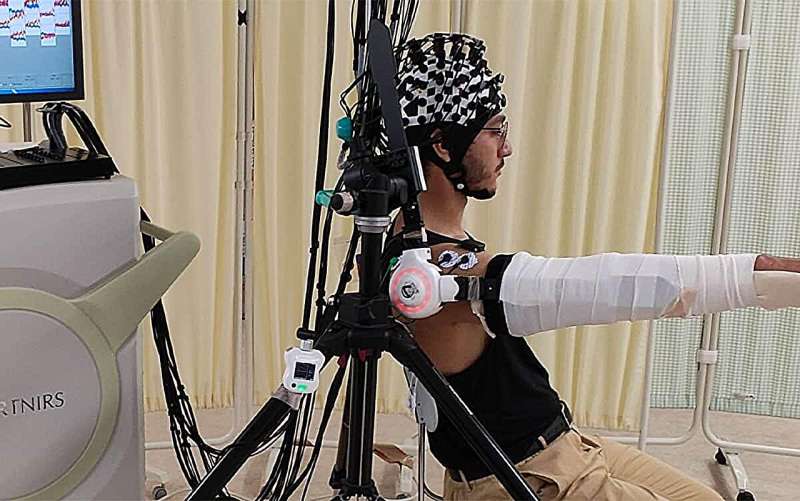For the study, now published in IEEE Transactions on Neural Systems and Rehabilitation Engineering, the research team examined brain activity in healthy participants wearing a cyborg-type robot (Wearable Cyborg HAL, CYBERDYNE Inc.) while raising their arms under three conditions.
The first condition was robot-assisted active movement, where participants initiated arm movement while receiving robotic support. The second condition, robot-driven passive movement, involved the robot moving the arm without the participant’s intention. The third condition was spontaneous movement, where the participant raised their arm unassisted.
Functional near-infrared spectroscopy performed to measure changes in brain blood flowrevealed significantly higher activity in the brain regions responsible for movement during active robot assistance and voluntary movement without robotic assistance.

